By Jean Suplick
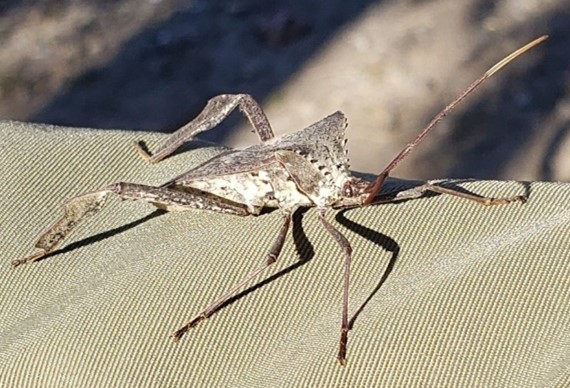
Sometimes you’ve just got to break out of COVID confinement and have a change of scenery. That’s why in early January, Michael and I hooked up the camper and headed to Lake Tawakoni State Park. Ninety minutes away from our Plano home, the park hugs the western shore of the Lake Tawakoni, a reservoir on the Sabine River. It’s a beautiful, well maintained park with a sandy beach for summertime swimming, lots of wooded hiking trails, a boat ramp, pocket prairie, and, of course, campsites. Plus it is far enough away from the metroplex that the night skies are fairly dark and the stars are pretty bright.
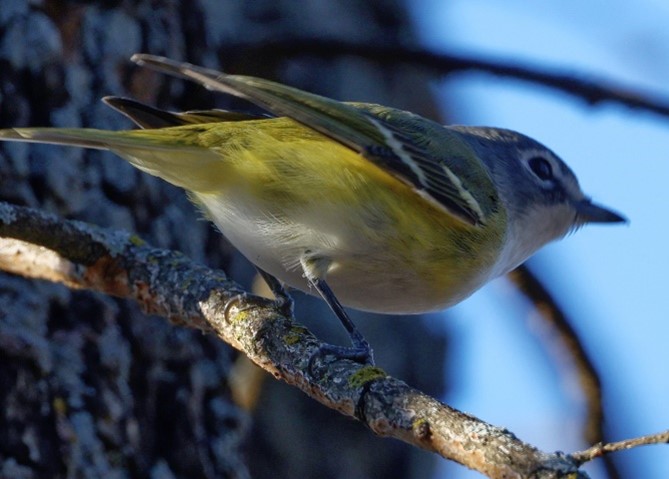
Inaugurating our stay at our campsite was a Giant Leaf-footed Bug (Acanthocephala declivis) which dropped out of a tree onto Michael’s arm. It got me thinking about all the insects hidden about, trying to make it through the winter. There must be quite a few because the next day, rustling leaves alerted us to an insect-eating Blue-headed Vireo vigorously foraging among the still-attached leaves of a post oak just over our heads. It was energetically poking into one cluster of dead leaves, first in one, then another. I have to assume it was worth the effort.
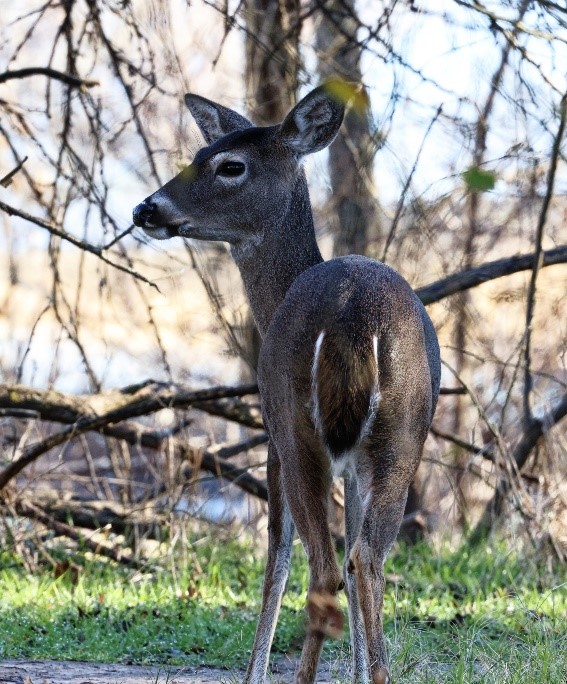
We saw tracks of common raccoons, but never a live one. However, each evening at dusk, right after we lit our campfire, one or two easily spooked, feral cats would slink around the periphery of the campsite. Cats weren’t the only mammals we saw, though. There were also plenty of deer to be seen in the mornings and evenings..
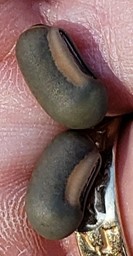
While most plant life is dead or dormant now, winter is a great time to inspect their fruit and seeds. Both Bigpod Sesbania (Sesbania herbacea) and the Bladder Pod (Sesbania vesicaria) grow near the shores of the lake. Both have dehiscent capsules, i.e. fruits or pods that when dry, split along a seam to release their seeds. The pods of these two Sesbania species are shaped differently, but they are both dry now. It is fun to pull the pods apart to inspect their structure and seeds.
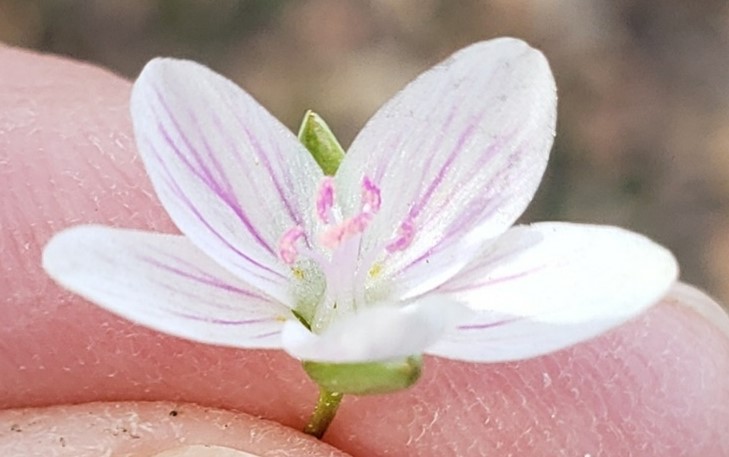
We were surprised to run across a tiny little flower in one of the low mown lawns. It was a Virginia Spring Beauty (Claytonia virginica), with its five pretty petals and two green sepals. What a cheery find! This individual little flower is apparently precocious; the seasonality graph on iNaturalist shows that very few observations have been logged in January nationwide.
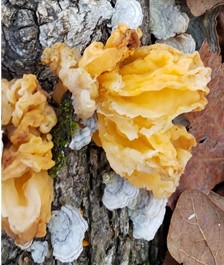
But that wasn’t the only bright color in the area. On the side of a decaying oak tree we found some beautiful Golden Ear (Naematelia aurantia) fungus.
Our trip truly was a refreshing break from being, well, homebound. If you get a chance, visit Lake Tawakoni State Park. I hope you’ll find it to be a lovely place, as I do. No matter the season or the weather, there’s always something for a naturalist to engage with there. And it’s so close to us!


